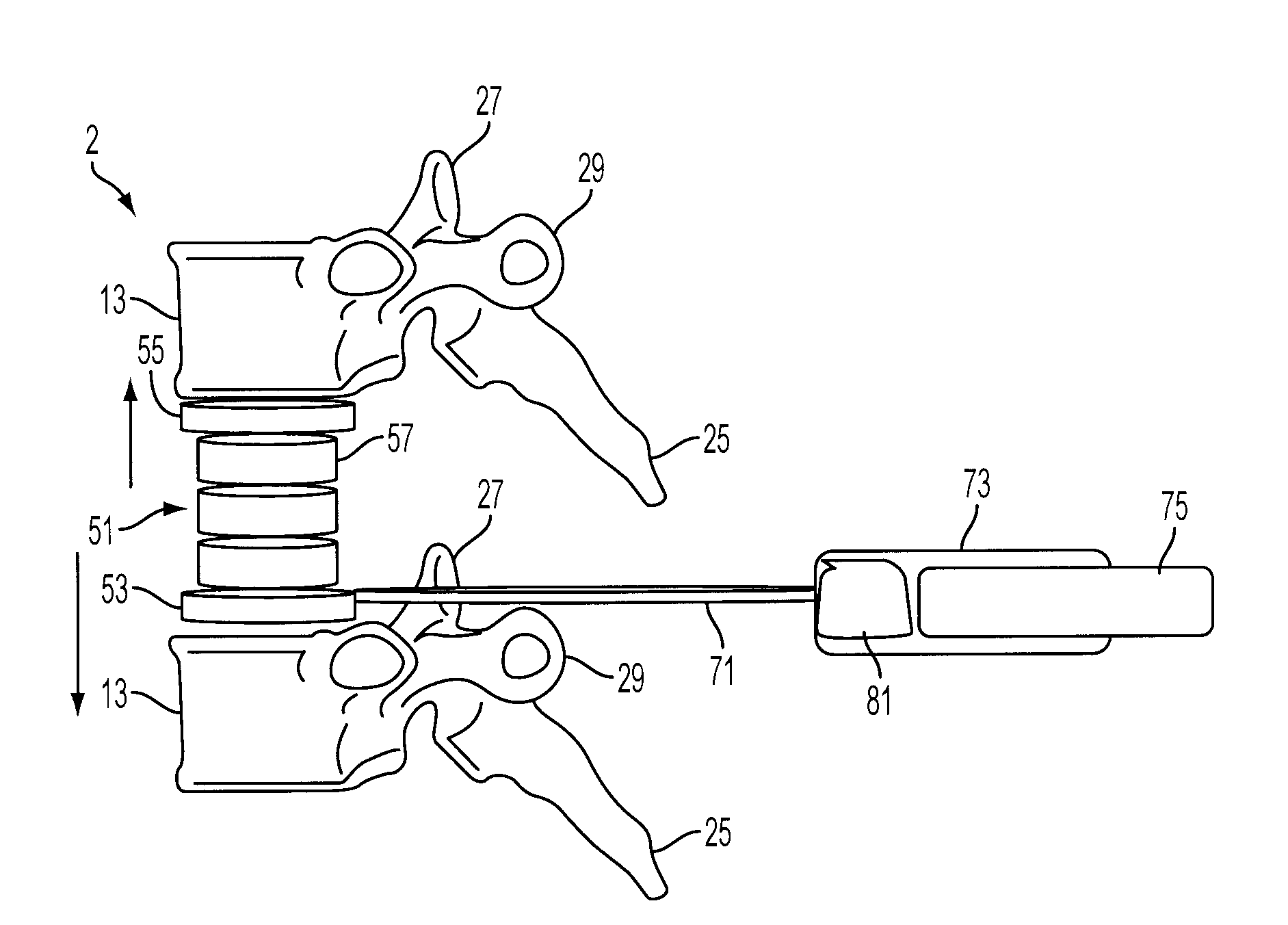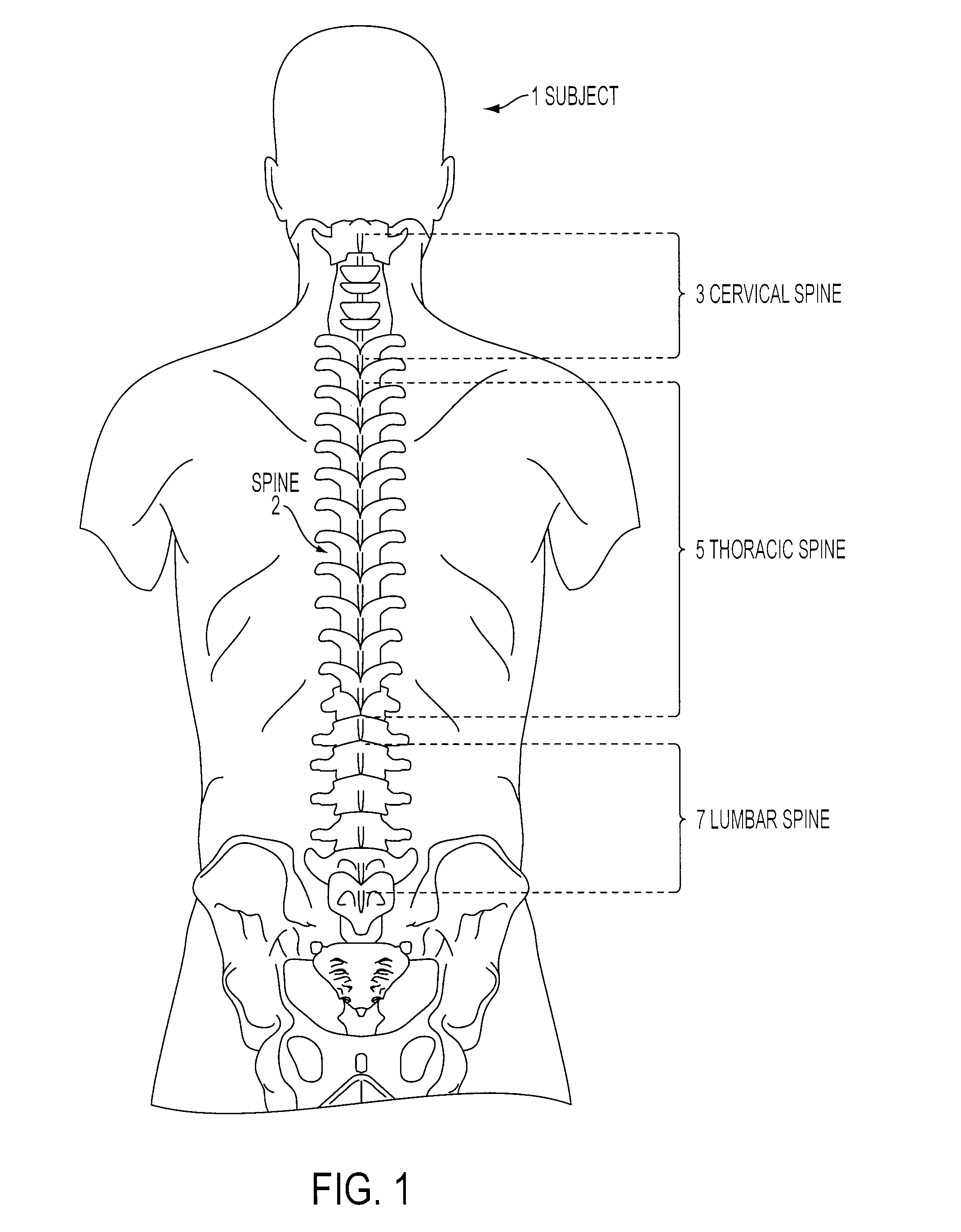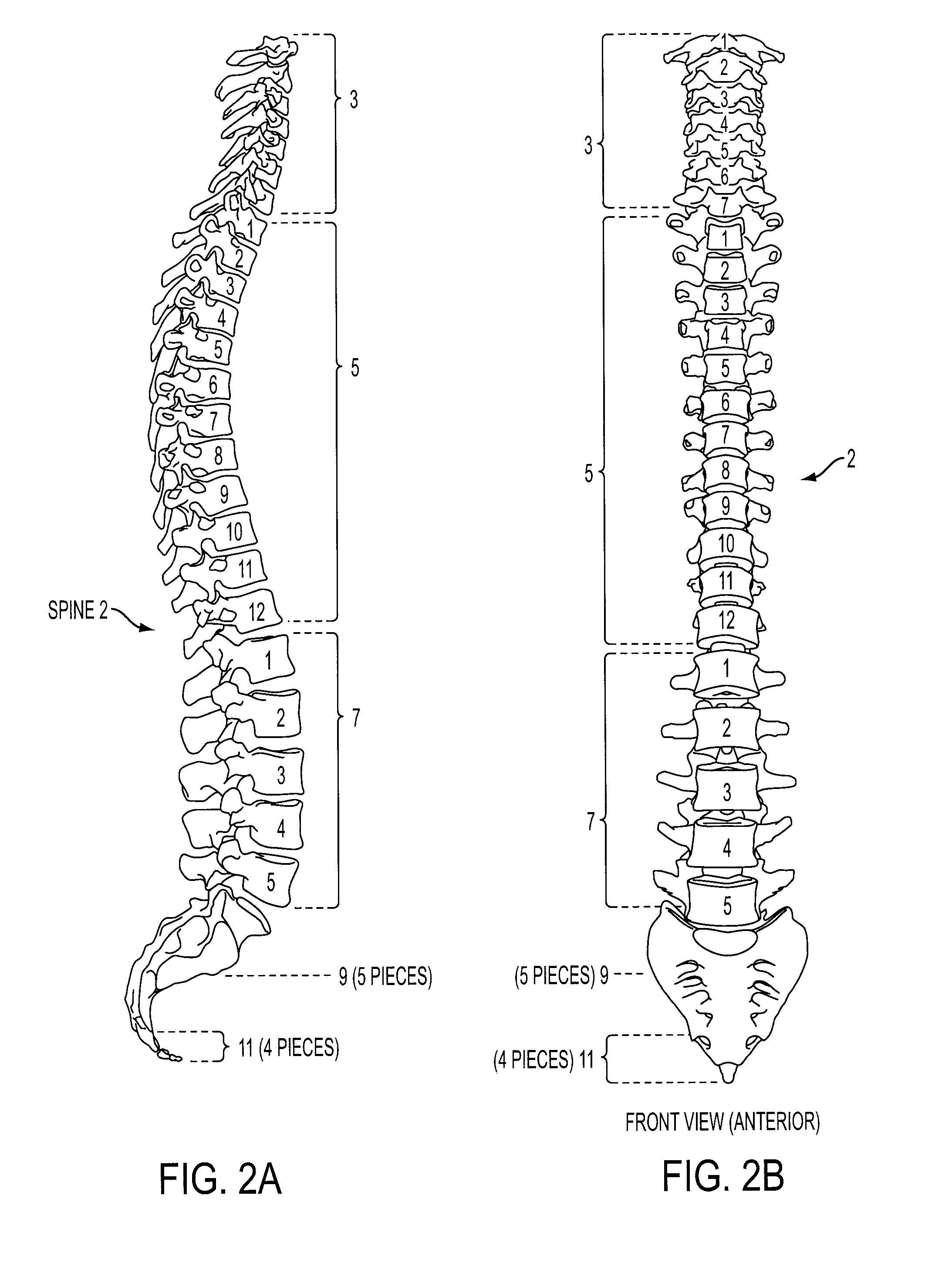Expandable Intervertebral Prosthesis Device for Posterior Implantation and Related Method Thereof
an intervertebral prosthesis and expandable technology, applied in the field of expandable intervertebral prosthesis devices for posterior implantation, can solve the problems of specialized access methods that can be deemed dangerous by some surgeons, bulky conventional cages, and inability to be inserted from the back
- Summary
- Abstract
- Description
- Claims
- Application Information
AI Technical Summary
Benefits of technology
Problems solved by technology
Method used
Image
Examples
Embodiment Construction
[0040]FIG. 1 illustrates a schematic posterior view of a spine 2 of a subject 1 and FIGS. 2A-B illustrate a schematic side view and posterior view of the spine 2, respectively. The normal anatomy of the spine of a human 1 is usually described by dividing up the spine 2 into three major sections: the cervical vertebrae 3, the thoracic vertebrae 5, and the lumbar vertebrae 7. Below the lumbar vertebrae 7 is a bone called the sacrum 9 and the coccyx 11, which is part of the pelvis. Each section is made up of individual bones called vertebrae 13. There are seven cervical vertebrae, twelve thoracic vertebrae, and five lumbar vertebrae.
[0041]FIGS. 3A-B illustrate a schematic plan view (axial overhead view) and side (lateral or elevation view) of a vertebra 13, respectively. FIG. 4 illustrates a schematic plan view (axial overhead view) of a vertebra 13. An individual vertebra 13 is made up of several parts. The vertabra consists of two stout rounded pedicles 15, one on each side which spr...
PUM
| Property | Measurement | Unit |
|---|---|---|
| height | aaaaa | aaaaa |
| vertical height | aaaaa | aaaaa |
| vertical height | aaaaa | aaaaa |
Abstract
Description
Claims
Application Information
 Login to View More
Login to View More - R&D
- Intellectual Property
- Life Sciences
- Materials
- Tech Scout
- Unparalleled Data Quality
- Higher Quality Content
- 60% Fewer Hallucinations
Browse by: Latest US Patents, China's latest patents, Technical Efficacy Thesaurus, Application Domain, Technology Topic, Popular Technical Reports.
© 2025 PatSnap. All rights reserved.Legal|Privacy policy|Modern Slavery Act Transparency Statement|Sitemap|About US| Contact US: help@patsnap.com



